
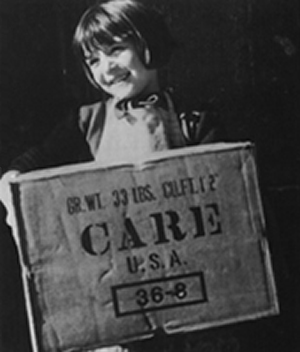
60 years of history and achievements
CARE began with the establishment of The Cooperative for American Remittance to Europe in November 1945 by 22 American organisations with the aim of providing relief to post-war Europe. At that time, CARE's activities consisted of sending "CARE Packages" filled with subsistence goods such as food and clothing to those suffering in the aftermath of WWII.
CARE's support was extended to Japan in 1948 and over the next 8 years, 10 million Japanese received $2900000 (US) worth of aid. CARE's work continued to extend to other areas in need of aid, such as parts of Asia, South America and Africa. As the activity base expanded, CARE's name changed from the original "The Cooperative for American Remittance to Europe" to "The Cooperative for American Relief Everywhere", and then to "The Cooperative for Assistance and Relief Everywhere".
CARE ended its post-war aid to Japan once Japan began to show signs of recovery. Thirty four years later in 1987, Japan found itself in a position to help those suffering from poverty around the world. The predecessor to the current CARE International Japan, "CARE Japan" was inaugurated and accepted as a member of the CARE International network.
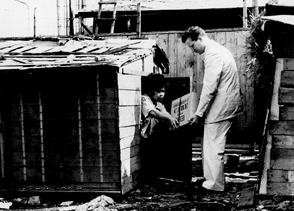
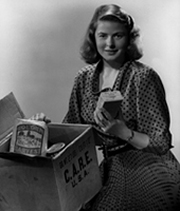
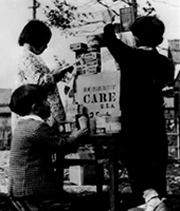
By 1947, with twelve European countries evidently on their way to recovery, CARE ended its aid to Europe and shifted its focus to Asia. Within the region, CARE stretched its hand out to Japan, the country most ravaged by the war. On 29 October 1947, it signed a basic cooperation agreement with the Japanese Government (under the Katayama administration).
CARE entered war-torn Japan for the first time the following year, in May 1948. Its headquarters were established at 4-63 Bentendou, Naka-ku, Yokohama and on 9 July 1948. It then formed an execution agreement with the Ministry of Economy and Industry, and began to work immediately.
The establishment of an office in Japan was CARE's first venture outside of Europe. Keeping its headquarters in Yokohama as its base, CARE extended the scope of its activities to deliver foodstuff and clothing to other ravaged areas such as Tokyo, Hiroshima and Nagasaki.
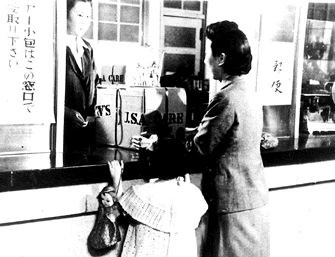
How were the CARE packages delivered to the Japanese people?
First, the packages which arrived from the USA were unloaded at Yokohama harbour and stored in a temporary warehouse. Afterwards, they were sent as parcels and collected at post office counters. This method was devised by CARE to ensure that the goods were delivered both directly and safely to the needy.
The CARE packages delivered to Japan at that time were divided according to the age of the recipient into: "food packages for babies," "food packages for infants" and "standard food packages." Special attention was paid to details such as the inclusion of can-openers in canned food packages. Examples of standard foodstuff which were included in the packages were full-fat powdered milk, chocolate, raisins, flour, sugar, bacon, margarine, etc. The subsistence goods in the packages included soap, cotton cloths, shirts and blankets. On top of basic supplies things such as medical and carpentry goods, tools and materials for electric repairing and plastering, and seeds and agricultural tools were included as well.
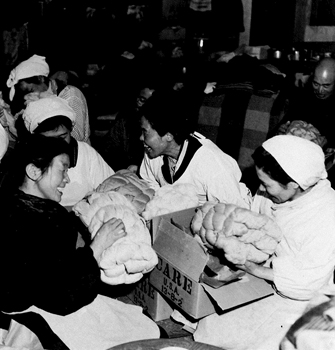
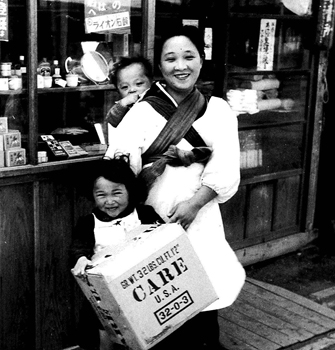
Japan was provided not only with emergency food and clothing relief, but also vocational training and creation of a good working environment in which technicians could be employed. Through these methods CARE greatly helped the victims in Japan become economically independent. This course of action was the start of the "self-help and sustainable development" principle which CARE advances today.
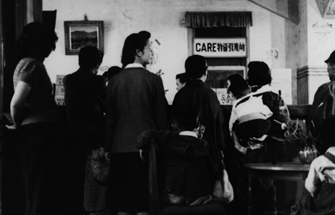
People lining up at the post office counter
to collect their CARE Packages
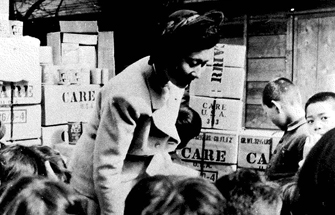
Princess Takamatsunomiya handing out CARE Packages
In 1949, as part of a food-provision project aimed at Japanese schoolchildren, CARE supplied powdered skimmed milk for use in school lunches. This was a CARE food aid programme targeted at schoolchildren, and was set up in order to ensure that the growing children had a constant intake of powdered milk, their sole source of nutrition at the time.
Many charitable donations were received both monetary and otherwise, such as $1000 (US) worth of medical books for the National Diet Library. As well as other various books sent to education bodies such as the Meiji Institute University,Tsuda College, and other public agencies. Subsequently, starting with the inclusion of children's books in the list of general commodities, books became readily available to the public.
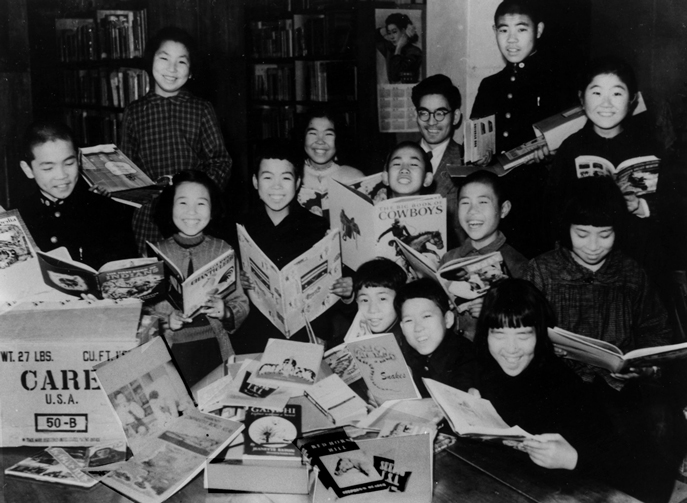
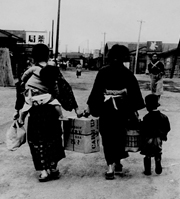
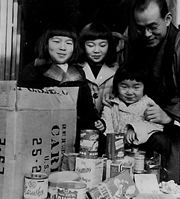
CARE's aid to Japan spanned over eight years, and came to an end on 30 December 1955, when Japan began to show signs of recovery.